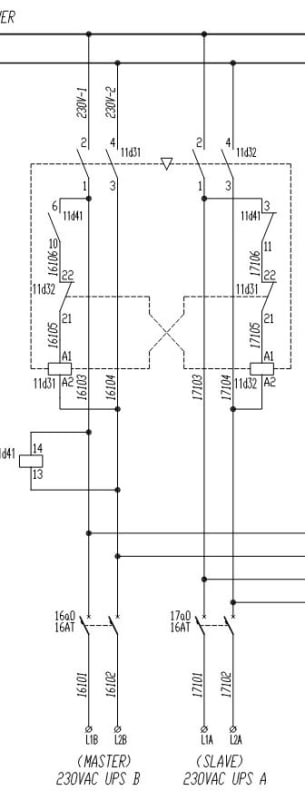NickParker
Electrical
- Sep 1, 2017
- 444
The control circuit is powered by two UPS units (UPS A and UPS B) with automatic transfer in case one fails. The motor feeder is supplied by an LV air circuit breaker (ACB), without a contactor. The ACB includes an undervoltage release (MN) and a shunt trip coil (MX).
Currently, when one of the UPS units fails, the ACB trips. However, I would like to prevent the ACB from tripping during the control power transfer between UPS A and UPS B. The control circuit diagram is attached for reference.
I would appreciate any suggestions!
Currently, when one of the UPS units fails, the ACB trips. However, I would like to prevent the ACB from tripping during the control power transfer between UPS A and UPS B. The control circuit diagram is attached for reference.
I would appreciate any suggestions!

